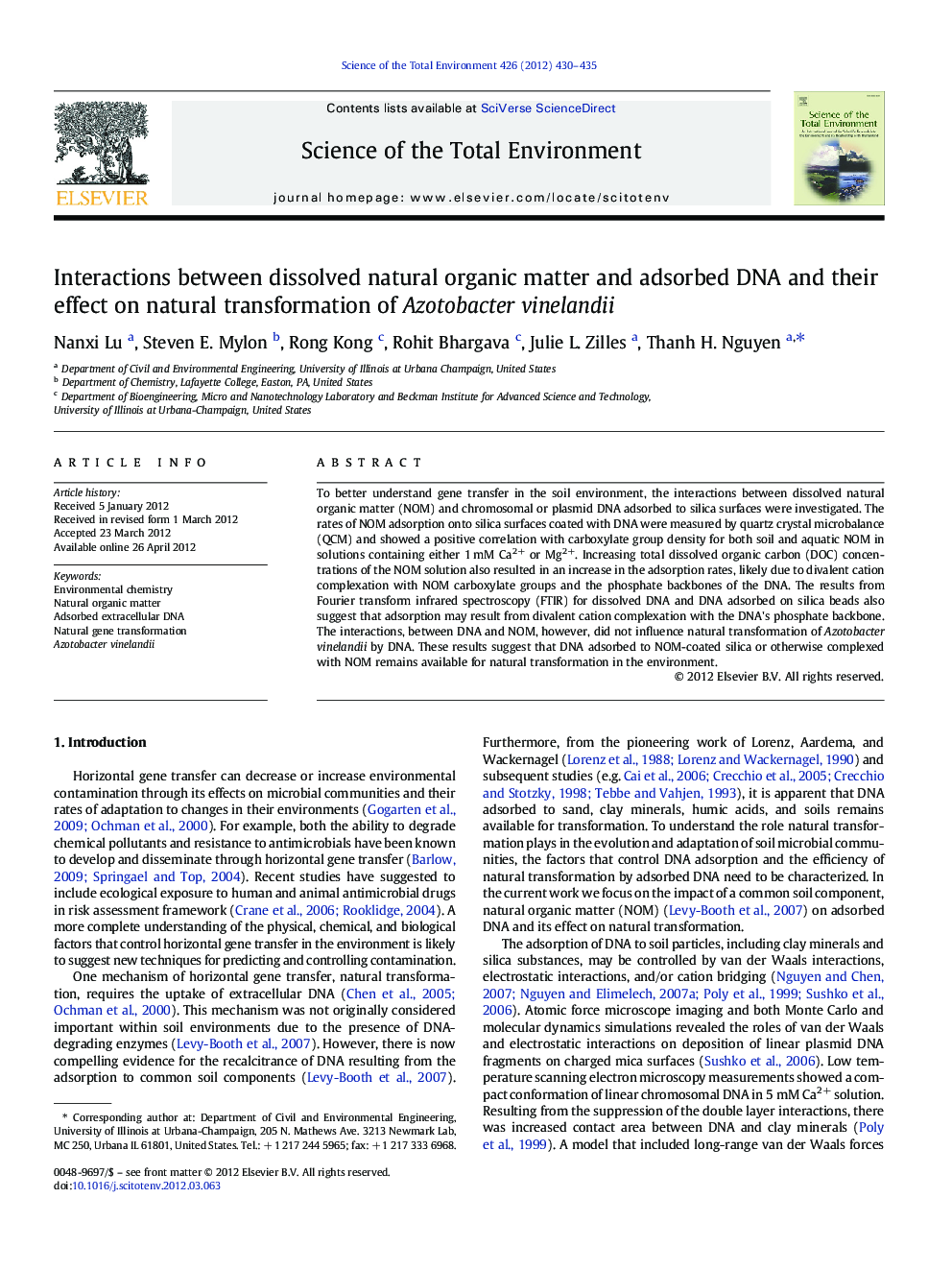| Article ID | Journal | Published Year | Pages | File Type |
|---|---|---|---|---|
| 4429498 | Science of The Total Environment | 2012 | 6 Pages |
To better understand gene transfer in the soil environment, the interactions between dissolved natural organic matter (NOM) and chromosomal or plasmid DNA adsorbed to silica surfaces were investigated. The rates of NOM adsorption onto silica surfaces coated with DNA were measured by quartz crystal microbalance (QCM) and showed a positive correlation with carboxylate group density for both soil and aquatic NOM in solutions containing either 1 mM Ca2+ or Mg2+. Increasing total dissolved organic carbon (DOC) concentrations of the NOM solution also resulted in an increase in the adsorption rates, likely due to divalent cation complexation with NOM carboxylate groups and the phosphate backbones of the DNA. The results from Fourier transform infrared spectroscopy (FTIR) for dissolved DNA and DNA adsorbed on silica beads also suggest that adsorption may result from divalent cation complexation with the DNA's phosphate backbone. The interactions, between DNA and NOM, however, did not influence natural transformation of Azotobacter vinelandii by DNA. These results suggest that DNA adsorbed to NOM-coated silica or otherwise complexed with NOM remains available for natural transformation in the environment.
► We use QCM to monitor the interactions between dissolved NOM with adsorbed DNA. ► We use FTIR to study divalent cation complexation with DNA. ► DNA interactions with NOM do not influence transformation of Azotobacter vinelandii. ► Adsorbed DNA or DNA complexed with NOM remains available for natural transformation.
